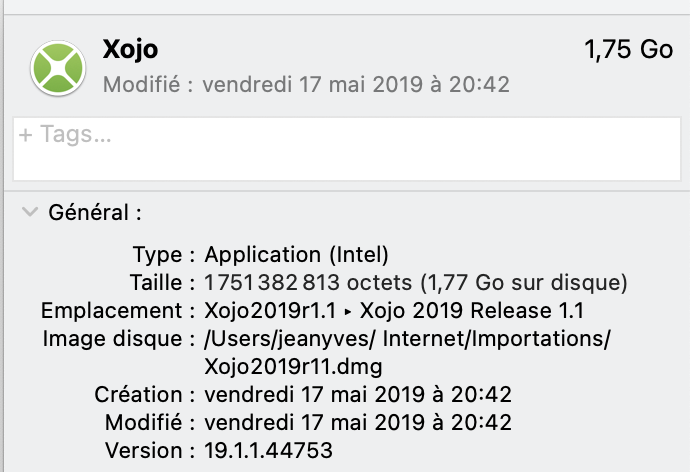I just replaced my 2015 Macbook Pro 15" with a 2023 Macbook Air 15". Having used the Migration Assistant, I had the same 2019 version of Xojo on both machines. So I ran a few tests, side by side. 1. Running Xojo, 2. loading my project, 3. running my project. I didn’t record the times, I just clicked “go” on both computers at the same time. My conclusion was, in all 3 tests, the speed was pretty much the same. That is, the M2 using Rosetta (a virtual machine of some sort I gather) runs about the same speed as the 2015 Intel chip (sorry I don’t know the exact chip) running it natively. So much for my fantasy that the new computer would save me time.
To be fair, the 2015 machine has 16GB RAM whereas the 2023 machine has only 8GB.
Of course this says nothing about Xojo, just the two Macs.
So I downloaded the 2023 Xojo rev 4. Miraculously, no changes were required to my code for my project to compile and run. Thank you for this. Nice. I have been shunning new Xojo versions for some time now (4 years apparently) because some earlier updates required a lot of er updating of my code.
I’ve just run the same tests, side-by-side, Xojo 2019 on 2015 Mac Pro vs Xojo 2023 on 2023 Mac Air.
Running Xojo, getting up to the project selection screen, looks like about 1/4 the time. Loading my project, Its got to be 1/10th the time or better. Running my app…about 1/2 the time. Wow. Nice work guys.
To be thorough I ought to load Xojo 2023 on the 2015 machine and test it, but I can’t be bothered.
I just want to commend you all for the work you did in the last 4 years while I was uh not paying attention.
Now…how does my app, compiled with Xojo 2023, and running on the M2 perform? This I have yet to determine.
The one question I have is, are there any settings I should be aware of that will improve the performance of Xojo or my compiled app, ie by running natively vs using Rosetta?
